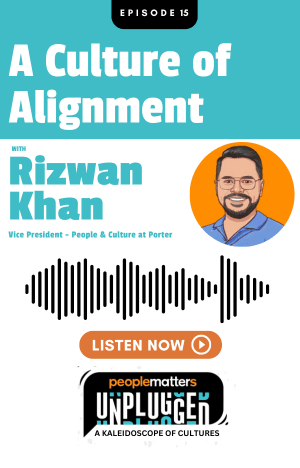From measuring hours, to output, to wellness: ADP's Yvonne Teo on shifting performance metrics

Singaporeans are among the least engaged employees in the world, according to figures released earlier this year by ADP. The average employee engagement rate in the city-state last year was just 11 percent, making it the sixth least engaged country out of 25 studied. This ought to be a fairly concerning statistic, given the correlation between engagement and performance.
People Matters asked Yvonne Teo, Vice President of Human Resources for ADP in the Asia Pacific, what she thinks is going on and what organizations ought to be doing. Here's her take on it.
The low rates of engagement among Singapore workers seem to suggest that Singaporeans are mostly underperforming at work—does the data bear this out?
While data and research have proven that engagement drives higher productivity, it may be overly simplistic, in my opinion, to conclude that low rates of engagement in Singapore equates underperformers. There are other factors that may still drive performance—for example, a sense of responsibility towards the manager, team, or clients.
It’s also important to note that full engagement at work is impacted by everyday challenges employees face both in and out of the office. In this regard, Singaporean employees outshine their global counterparts in terms of being able to withstand challenges: 19 per cent of Singaporean employees surveyed were deemed “highly resilient” amidst the pandemic, compared to the global average of 15 per cent. However, they also have some of the highest stress levels. ADP research has found that two in five Singaporean workers (39 per cent) are doing around 6-10 hours of unpaid work every week, and 72 per cent of Singaporean workers surveyed also said they were experiencing stress at least once during the working week on a regular basis. Over time, chronic stress may indeed lead to underperforming, so as stated above, it’s important for organisations and leaders to view engagement, wellness and performance as interdependent factors.
How effective do you think current approaches to managing wellness and engagement are, especially in terms of boosting performance? What works best and what should be avoided?
There is huge room for improvement, both from the managers and employees’ end. Firstly, there must be real commitment from companies to want to ensure mental wellness in creating a culture and environment that is safe for employees to share their concerns and issues freely. Secondly, it also requires employees to be more mindful of their own condition, if they are not feeling the way they should be. And thirdly, companies must also be willing to invest in external resources to provide advisory or counseling services.
Wellness has a big impact on engagement and vice versa, so organizations should avoid viewing these in silos. Progressive organizations are looking at investing both time and efforts in wellness and raising energy levels, which will then also boost productivity and performance.
As far as productivity and performance goes, we at ADP have for some time focused very much on measuring productivity and performance via output and results. With 2020’s shift to WFH, the focus has now shifted to employee wellness and engagement.
Given the known advantages and downsides of WFH, what do you see as the driving factors that help maintain productivity and performance?
Employees’ self-motivation and desire to do well is of utmost importance to maintain productivity and performance.
The manager’s role has changed drastically from one that is “controlling” to enabling and engaging to ensure that the employees are empowered to do what they have been tasked to do.
Feedback and communication are important components of inculcating self-motivation as a mindset. Employees and leaders need to meet each other halfway: organizations must provide a conducive, supportive working environment for employees, and give recognition of goals that have been met or exceeded. Employees, too, need to communicate their own expectations for what they need to improve their own performance. Building this sense of mutual trust and appreciation then creates motivation to attain excellence while working independently. Our own approach has been to operate on a system of trust rather than control, and we have seen a marked improvement in performance as a result.
On the topic of communication, how can organizational goals be better translated down to team and perhaps even individual goals?
Good communication, processes and systems have to be present for organizational goals to be effectively translated down to teams. Any missing or weak links in any of the three would render miscommunication and confusion. Managers have to communicate clearly their expectations with specific metrics, following structured timelines for check-ins and evaluation periods. If there should be a shift in assessment metrics, such as a move to measure productivity through output and results rather than work hours, that change in expectations needs to be communicated clearly to all levels of the organization.
Could you share a little more about your own processes and systems to get that level of communication in place?
From the process perspective, we start with our annual planning process, followed by quarterly townhalls from both Global and Regional perspectives. There is regular communication via emails with regards to specific goals and how we are tracking as well. From the system perspective, the managers are able to track weekly tasks and quarterly goals.
Check-ins between leadership and managers are a good way of aligning strategy with execution as this allows for more interactive two-way communication. We have weekly check-ins at every level of the entire global organization. It’s an efficient way to break down the longer periods between quarterly townhalls, and to ensure that associates get the support they need from their managers to achieve their key priorities for the week. This has been especially useful during the pandemic, where the need for connection through clear and consistent communication is crucial.














